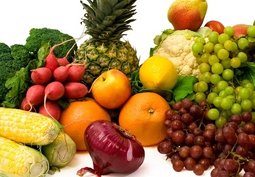By: Beth Wallace
For many of us, we’ve only heard about food-borne illness in the news. You may have then checked your jar of peanut butter to make sure it wasn’t recalled and moved on with your day.
However, for some, the repercussions of buying the wrong vegetable or cut of meat can literally mean life or death.
It seems absurd to me that in our industrialized world, too often we can’t trust our own food sources. Luckily, things are starting to change.
President Obama passed the Food Safety Modernization Act in 2011, which is a “Common-sense law that shifts the food safety focus from reactive to preventive.” This past week, the Food and Drug Administration released the first two of five proposed rules that focus on prevention.
The first, “Controls for Human Food” states that facilities that process, package, or store food will need to evaluate potential hazards in their products, identify how to minimize those hazards, and keep documentation on those controls.
The second, “Produce Safety” aims to set standards on water sanitation, hand hygiene, animal control in growing areas, soil additions, and building sanitations.
Hopefully, this is the start to safer and healthier food sources. Until these rules are in place, here are a few tips that can help to keep your family safe:
- ALWAYS wash your produce. Fruits can be washed under warm water, while vegetables should stay under cold. Though “produce washes” are available, there is no conclusive data that they protect you against food-borne pathogens better than water alone.
- Stay temperature safe. Keep hot foods above 140 F, and cold foods below 40F. Foods between that range are at higher risk of bacterial growth.
- Prepare your fresh produce first, then move to meats. When preparing meals in a busy kitchen, it can be easy to cross-contaminate foods. If you use one cutting board and one knife to cut clean all produce first before starting on any other items, you lessen your risk of transferring bacteria from uncooked meats.
- Strategize your refrigerator. Put the raw foods you don’t plan to cook at the top of your refrigerator, and then work your way down to the uncooked meats and seafood at the bottom. Storing your foods this way decreases the chance that juices from that raw chicken will drip onto the grapes that you were planning to have for your snack.
I am looking forward to having a safer food supply, and enjoying my peanut butter and produce in peace.



